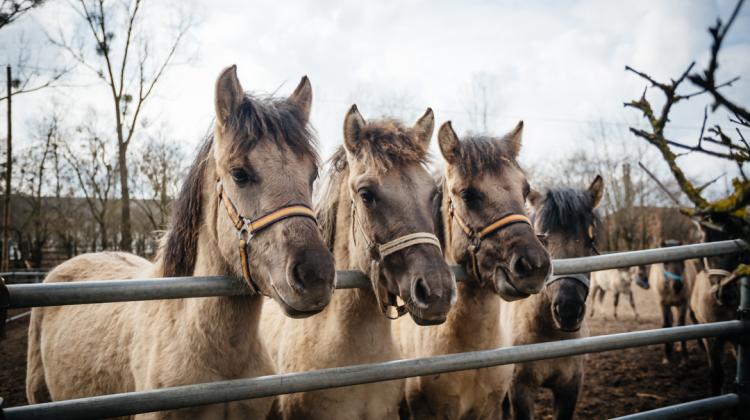Polish Academy of Sciences institute in Olsztyn took over the research station in Popielno
 Polish koniks (descendants of tarpans), approx. 150 of which are in Popielno . Photo by JakubowskiFoto.
Polish koniks (descendants of tarpans), approx. 150 of which are in Popielno . Photo by JakubowskiFoto.
Research on animal reproduction and food will be carried out by scientists at the Research Station in Popielno. The station known for breeding konik, beaver and local cattle breeds was incorporated into the Institute of Animal Reproduction and Food Research of the Polish Academy of Sciences in Olsztyn.
"Efforts to incorporate the research station in Popielno from the assets of units subject to the Chancellery of the Polish Academy of Sciences lasted two years. For years, Popielno has been a very well managed centre, famous for konik breeding and beaver reconstitution programs, conducting maintenance breeding of local cattle breeds covered by the protection program. The station also made attempts to cross European bison, buffalo and cow, in order to remedy the permanent problems of the domestic market meat supply" - stressed in an interview with PAP director of the Institute of Animal Reproduction and Food Research of the Polish Academy of Sciences in Olsztyn, Prof. Mariusz Piskuła.
He added that in connection with the reorganization of the Polish Academy of Sciences property, it was necessary to review the auxiliary farms in terms of their usefulness and compliance with the statutory activity of the Academy. "Although the station in Popielno fulfilled its tasks, it generated losses in recent years" - he noted.
"The station in Popielno was incorporated into the Olsztyn institute of the Polish Academy of Sciences, because the program of research conducted by scientists of the Institute largely coincides with that conducted in Popielno. We are looking for cooperation opportunities - not only for free-living and farm animals reproduction, but also for research into traditional and green foods and their health-promoting properties"- said Prof. Piskuła.
PAS scientists want to put research centre for large animals (cattle, pigs, horses) in Popielno, as the possibility of conducting experiments in areas where production of animals is also carried out is currently limited.
Director Piskuła added that Popielno would continue breeding Polish konik and maintain the environmental education centre; cattle breeding would be located near Wielki Las (subject to the station in Popielno), and a research centre with laboratories would be located in Wejsuny.
The first independent researchers will move from Olsztyn to Popielno in May.
The Polish Academy of Sciences facility in Popielno was established in the 1950s. The primary objective was to enrich and save natural resources. Popielno, due to its location and natural values, proved to be the right place for the implementation of this program. It is situated in the center of Pisz Forest, on a peninsula surrounded by four lakes - Bełdany, Mikołajskie, Śniardwy and Wartołty.
The station in Popielno currently has the acreage of 800 ha of agricultural land. The station has a herd of 40 deer animals: red deer, roe deer, about 150 Polish koniks - in the stable and in the wild in Popielno forest, which has a reserve status. The station also has about 180 cattle of red and black and white breeds. The beaver farm, functioning since the 1950s, is still there, although the reproduction of these animals is limited. Popielno is also home to Zubron Brutus, which is the result of a cross between a buffalo, bison and cow. As a sterile animal it has a lifelong resident status there.
PAP - Science and Scholarship in Poland
ali/ mrt/
tr. RL
Przed dodaniem komentarza prosimy o zapoznanie z Regulaminem forum serwisu Nauka w Polsce.


















